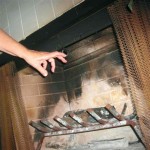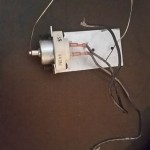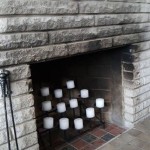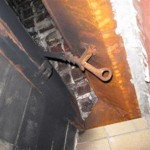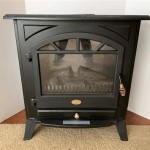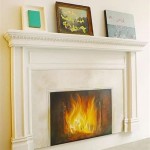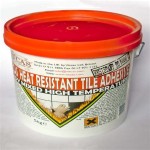Installing Gas Fireplace Log Sets: A Comprehensive Guide
Gas fireplace log sets represent a popular and convenient alternative to traditional wood-burning fireplaces. They offer the aesthetic appeal of a real fire without the associated mess, safety concerns, and environmental impact. However, proper installation is crucial for ensuring safe and efficient operation. This article provides a detailed guide to installing gas fireplace log sets.
Before undertaking any installation, it is paramount to verify that the existing fireplace and gas line are compatible with the chosen log set. Consult local building codes and regulations to ensure compliance. It is highly recommended to engage a qualified and licensed gas technician for the installation process, particularly if unfamiliar with gas line connections and appliance installation. Improper installation can lead to gas leaks, carbon monoxide poisoning, and fire hazards.
The process typically involves several key steps: preparation, gas line connection, log arrangement, and safety testing. Each stage demands careful attention to detail and adherence to the manufacturer's instructions. Disregarding these instructions can compromise the safety and performance of the fireplace.
Key Considerations Before Installation
Before starting the installation, several crucial factors must be considered. These factors ensure the safety, efficiency, and compatibility of the log set with the existing fireplace system.
First, verify the type of gas connection available – natural gas or propane. Gas log sets are designed for specific fuel types, and using the incorrect fuel can lead to inefficient combustion and potentially dangerous situations. Confirm the gas supply type by checking existing gas appliances or contacting the utility company. The log set purchase must match the fuel type. Changing from one fuel type to another typically requires changing the gas valve and other components, which adds to the cost and complexity of the installation.
Second, measure the dimensions of the existing firebox accurately. The log set must fit comfortably within the firebox without crowding the burners or obstructing airflow. The manufacturer's specifications will indicate the minimum firebox size required for the specific log set model. Taking precise measurements is critical to avoid purchasing a log set that is too large or too small.
Third, inspect the existing gas line and valve for leaks or damage. A qualified technician should pressure-test the gas line to ensure it is free from leaks. If any issues are found, they must be addressed before proceeding with the installation. A faulty gas line or valve can result in dangerous gas leaks and must be repaired or replaced by a licensed professional.
Finally, review the manufacturer's installation instructions thoroughly. These instructions provide specific guidance on the installation process for the particular log set model. They contain essential information on log placement, burner adjustments, and safety testing. Following the manufacturer's instructions is essential for ensuring proper installation and safe operation.
Step-by-Step Installation Process
The installation process typically involves the following steps, assuming the gas line and fireplace are suitable for the log set. Safety precautions are essential throughout the entire process.
1. Preparation:
Begin by turning off the gas supply to the fireplace at the main shut-off valve. Disconnect any existing gas logs or burners. Clean the firebox thoroughly, removing any ash, debris, or soot. This ensures proper airflow and prevents any interference with the new log set.
2. Gas Line Connection:
Connect the gas line to the burner assembly according to the manufacturer's instructions. Use Teflon tape or pipe joint compound on all threaded connections to prevent gas leaks. Tighten the connections securely, but avoid over-tightening, which can damage the fittings. A qualified technician should perform this step, as improper gas line connections can lead to gas leaks and explosions.
3. Burner Placement:
Position the burner assembly within the firebox according to the manufacturer's instructions. Ensure the burner is level and stable. Some burner assemblies have adjustable legs or supports to facilitate proper leveling. Leveling the burner ensures even flame distribution and efficient combustion.
4. Log Placement:
Arrange the ceramic logs on the burner assembly according to the manufacturer's specific diagram. This step is crucial for achieving the desired aesthetic appearance and ensuring proper airflow. Each log is typically numbered, and the order of placement is critical. Incorrect log placement can obstruct the burner ports and result in an inefficient or unsafe flame pattern.
5. Ember Material Placement:
Many log sets include ember material, such as rock wool or ceramic embers, which are scattered around the base of the logs to enhance the realistic appearance of the fire. Distribute the ember material evenly around the burner assembly, following the manufacturer's instructions. Avoid covering the burner ports with the ember material, as this can obstruct the gas flow and affect the flame pattern.
6. Pilot Light Ignition:
Once the logs and ember material are in place, turn the gas supply back on and light the pilot light. Follow the manufacturer's instructions for lighting the pilot light, which may involve pressing and holding a control knob while igniting the pilot flame. If the pilot light does not ignite, consult the manufacturer's troubleshooting guide or contact a qualified technician.
7. Flame Adjustment:
After the pilot light is lit, turn on the main burner and observe the flame pattern. Adjust the flame height and intensity as needed using the control valve. The flame should be blue with yellow tips and should not produce excessive soot or smoke. If the flame is excessively yellow or smoky, it may indicate a problem with the gas supply or burner assembly, which requires attention from a qualified technician.
8. Safety Testing:
Perform a leak test on all gas connections using a soapy water solution. Apply the solution to the connections and look for bubbles, which indicate a gas leak. If any leaks are detected, turn off the gas supply immediately and tighten the connections or replace the faulty component. A qualified technician should address any persistent leaks.Essential Safety Precautions
Safety should be the foremost consideration during the installation and operation of gas fireplace log sets. Adhering to safety guidelines minimizes the risk of accidents and ensures the long-term safety of the fireplace system.
Carbon Monoxide Detectors:
Install carbon monoxide detectors in the vicinity of the fireplace. Carbon monoxide is a colorless, odorless, and deadly gas that can be produced by incomplete combustion. Carbon monoxide detectors provide an early warning in the event of a gas leak or malfunction.
Regular Inspections:
Schedule regular inspections of the gas fireplace system by a qualified technician. These inspections should include a thorough examination of the gas line, burner assembly, and venting system. Regular inspections can identify potential problems before they become serious safety hazards.
Proper Ventilation:
Ensure proper ventilation in the room where the fireplace is located. Adequate ventilation helps to prevent the buildup of carbon monoxide and other harmful gases. Do not block or obstruct any vents or air inlets.
Clearance Requirements:
Maintain adequate clearance around the fireplace, keeping flammable materials away from the heat source. Follow the manufacturer's recommendations for clearance distances. Flammable materials, such as curtains, furniture, and paper, can ignite if placed too close to the fireplace.
Children and Pets:
Supervise children and pets when the fireplace is in operation. The glass front of the fireplace can become extremely hot and can cause burns. Install a safety screen or barrier to prevent accidental contact with the hot surface.
Never Store Flammables Nearby:
Never store flammable materials, such as gasoline, propane, or aerosols, near the fireplace. These materials can ignite if exposed to heat or flames.
Follow Manufacturer's Instructions:
Always follow the manufacturer's instructions for operating and maintaining the gas fireplace log set. These instructions provide essential information on safe operation and troubleshooting.Following these precautions is crucial for ensuring the safe and enjoyable operation of a gas fireplace log set. Contacting a qualified technician for installation and maintenance is a worthwhile investment in safety and peace of mind.

How To Select And Install A Gas Fireplace Log Set Fireplaces Direct Learning Center

How To Select And Install A Gas Fireplace Log Set Fireplaces Direct Learning Center

How To Put In A Gas Log Set For Fireplace

What Are The Benefits Of Installing A Gas Log Set In Your Fireplace

Gas Log Sets Fireplace Logs Chimcare

Vented Gas Logs Heater Or Decorative Bart Fireside

How To Put In A Gas Log Set For Fireplace

Gas Fireplace Services Houston Tx Lords Chimney

What You Need To Know About Gas Fireplace Logs Fireplaces Direct Learning Center

Install A Realistic Gas Log Set Indirect Direct Vent Logs
Related Posts

